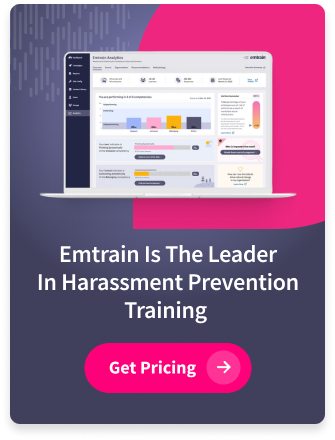Conflict at work is inevitable. Despite this reality, there are many steps that employers can take to avoid and resolve these situations. My experience as an independent workplace investigator has given me a bird’s eye view of workplace conflict as it unfolds, and I have been able to spot a few patterns. One pattern is that there always seems to be a singular point in time where the action could have been avoided. Over the next few weeks, I will be posting a series of blog entries that address best practices for conflict prevention and resolution while identifying potentially triggering turning points.
Step 1
The first step towards avoiding conflict is establishing a positive, productive, respectful workplace culture.
The most important lesson you can learn is: addressing issues head-on is key. A part of establishing a positive culture is addressing conflicts at the source, and not letting anything fester. Do not confuse practices to prevent conflict with being a leader who avoids conflict. Alongside conflict engagement, here are a few (not-so) secret practices to a good workplace culture:
- Consistency is key.
- Be conscious of actual and perceived fairness.
- Establish a culture of respectful truth-telling.
- Be curious and unafraid to find better ways of doing things.
- Create a culture of continuous learning.
- And attempt to create multiple avenues for employees to ascend in their careers.
Step 2
Once a positive foundation of respect and productivity has been laid, it becomes time to move on to active conflict prevention. One way to take an active role in workplace conflict prevention is proper organizational change management.
When managing organizational change, make sure you are aware of “triggering” events or issues that can lead to conflict. It is important that you be able to answer the following questions from employees: What is the change? Why is the change being made? How will the change affect me? Some examples of changes that may give rise to unease or conflict are reorganizations, flattenings of organizational structures, changes because of economic realities, mergers and acquisitions or closings of locations or facilities.
A common, triggering scenario is a leadership team working on change in a silo. When this team rolls out the plan to the employees who will be affected by the change, those employees have not been a part of the planning process and are therefore unfamiliar with both the plan itself and the reason for the change. Backlash is likely to result.
Here are some important practices to consider when managing organizational change:
- Be careful using language such as the “old” system or the “old” employees, or indicating whether someone is a “good fit.” These are often interpreted as having a bias against older employees or those who might not fit the majority demographic of the workforce.
- Recognize the good work that was done under the previous structure, system, etc.
- Seek input from those who will be affected and listen to their concerns. Often, the person who is doing the day-to-day work is in an excellent position to provide information about how the changes will work in real life and can point out unintended consequences.
- Describe why the changes are being made, how the changes are expected to positively impact the company or department, and how the changes will be implemented.
- Be honest about potential challenges.
- If the change involves new or different responsibilities for a particular employee or class of employees, explain clearly and in detail what those changes will be, how long they will take to implement, and how the employee will be evaluated based on the new expectations.
- Help employees manage fear and angst.
- Have multiple meetings or send out information periodically as decisions about changes are being made.
- Develop scripts for managers, especially line managers, so that they have a deep understanding of the why, what, and when of the changes and can provide easy-to-share information.
- Develop an FAQ document and distribute it to employees who will be affected.
We hope these first tips on conflict prevention serve you and your workforce well. Stay tuned for next steps and tips from Patti Perez on honing communication skills, utilization of resources, and conflict investigation!








